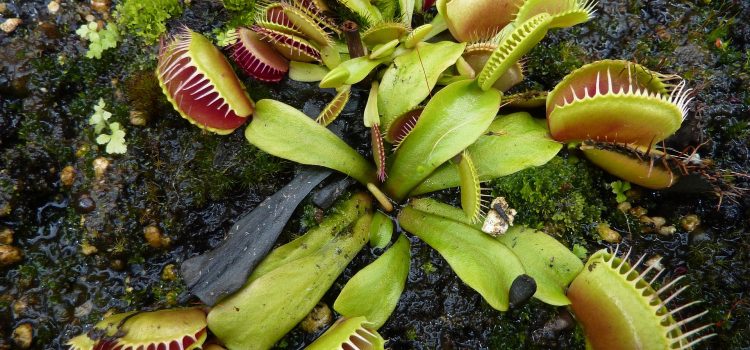
Are you tired of the same old strategies for catching prey? Well, carnivorous plants have come up with a stinky solution! These unique plants have evolved to lure in their meals with enticing odors, leaving insects and other small creatures helpless to resist. But how do they do it? And what benefits do these fascinating flora bring to the environment? In this blog post, we’ll explore the stinky strategy of carnivorous plants and discover how you can grow them yourself. Get ready for a wild ride through nature’s most intriguing tactics!
What are carnivorous plants?
Carnivorous plants are a unique group of flora that have evolved to obtain nutrients from small animals and insects. Unlike other plants, they are not solely reliant on photosynthesis for their survival. Instead, carnivorous plants use modified leaves, traps or sticky surfaces to capture prey.
There are over 700 species of carnivorous plants found all around the world, with each having its own specialized way of attracting and catching prey. Common examples include Venus flytraps, pitcher plants and sundews.
Despite being called ‘carnivores’, these plants do not actively hunt down animals like lions or tigers do! Rather than chasing after their food, they use passive mechanisms such as producing sweet nectar or strong smells to attract insects into their traps.
Interestingly enough, most carnivorous plant habitats lack essential nutrients required for plant growth such as nitrogen and phosphorus. By consuming small creatures such as flies and spiders who provide these nutrients in abundance through digestion processes in the soil- it’s how they survive!
How do carnivorous plants lure in their prey?
Carnivorous plants are fascinating organisms that have developed unique mechanisms to catch their prey. Unlike other plants, which rely on photosynthesis for energy, carnivorous plants derive nutrients from the insects and small animals they consume.
One of the most common ways carnivorous plants lure in their prey is through the use of odors. Many species produce a sweet scent that attracts insects looking for nectar or pollen. However, once they land on the plant’s leaves or flowers, they become trapped by sticky hairs or slippery surfaces.
Other types of carnivorous plants employ more active methods to capture their food. For example, Venus flytraps have specialized leaves with hinged traps that snap shut when triggered by an insect’s movement. Sundews have sticky tentacles that bend towards their prey when stimulated by touch.
Interestingly, not all carnivorous plants use odor or movement to attract prey. Some species live in nutrient-poor environments where nitrogen and phosphorus are scarce. These plants may emit chemicals similar to those found in animal waste products as a way to trick insects into thinking there is food nearby.
While there are many different strategies used by carnivorous plants to lure in their prey, one thing is clear: these remarkable organisms have evolved incredibly creative solutions for surviving in challenging environments!
What are the benefits of carnivorous plants?
Carnivorous plants are unique and fascinating organisms that offer several benefits to both the environment and individuals who grow them.
Firstly, carnivorous plants help control insect populations by feeding on them. This can be especially useful in areas where insects may pose a threat to crops or other plant life. By consuming harmful pests, these plants act as natural pest control agents.
Moreover, some species of carnivorous plants have medicinal properties that have been used for centuries in traditional medicine practices. For instance, the sundew plant has anti-inflammatory properties that can help alleviate symptoms associated with respiratory tract infections like bronchitis.
Cultivating carnivorous plants also provides an opportunity for education and research into their unique adaptations and ecological roles. Students can learn about biology concepts such as photosynthesis, adaptation, symbiosis etc., while researchers study how these amazing predators interact with their environments.
Lastly but not least, growing carnivorous plant collections offers aesthetic value by adding interest to indoor gardens or outdoor landscapes through their striking colors and shapes.
There are numerous benefits of cultivating carnivorous plants ranging from natural pest control to ornamental purposes highlighting its strategic role in nature’s food chain cycle.
How to grow carnivorous plants?
Growing carnivorous plants is a fascinating hobby that requires some specific care and attention. The good news is that you don’t need to be an expert gardener to grow these unique plants successfully. Here are some tips on how to grow carnivorous plants.
First, it’s important to choose the right type of soil for your plant. Carnivorous plants thrive in nutrient-poor soils with high acidity levels, so make sure to use a mixture of peat moss and perlite or sand.
Secondly, providing these plants with adequate sunlight is essential for their growth. Place them in a spot where they can receive at least six hours of direct sunlight per day.
Thirdly, watering habits should vary depending on the species of carnivorous plant you have. Generally speaking, they require moist but well-draining conditions; avoid letting them sit in standing water as this could lead to root rot.
Feeding your carnivorous plant can be tricky but necessary since their diet consists mainly of insects. Avoid using pesticides or insecticides as it may harm your plant; instead opt for live food like crickets or flies once every two weeks.
With proper care and attention, growing carnivorous plants can be rewarding and enjoyable!
Conclusion
Carnivorous plants have developed an extraordinary strategy to thrive in nutrient-poor environments. Through their unique abilities to lure and digest insects, they are able to obtain the necessary nutrients for survival. Their incredible adaptations make them fascinating not only for scientists but also for plant enthusiasts.
If you plan on growing your own carnivorous plants, remember that they require specific conditions such as high humidity and acidic soil. Make sure you choose the right species of carnivorous plant that will suit your local climate and environment.
Incorporating these amazing plants into your garden can add a touch of intrigue and wonder to your outdoor space. Not only will they impress visitors with their odd beauty, but their predatory behavior is sure to spark curiosity among all who encounter them. So why not try incorporating a few of these captivating specimens into your collection?










